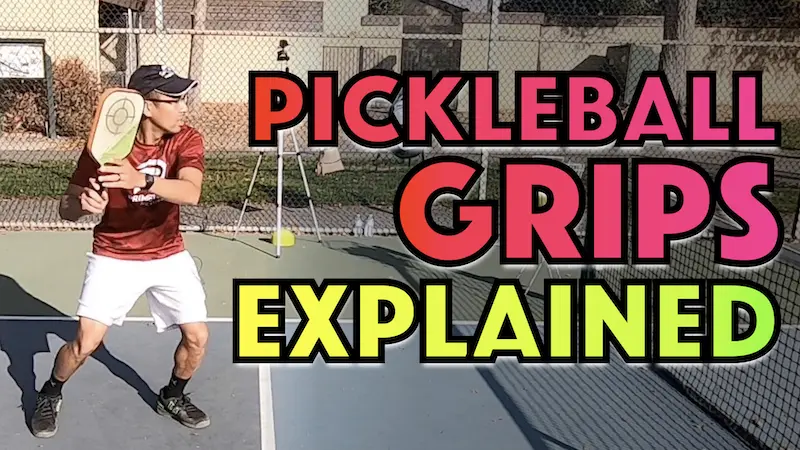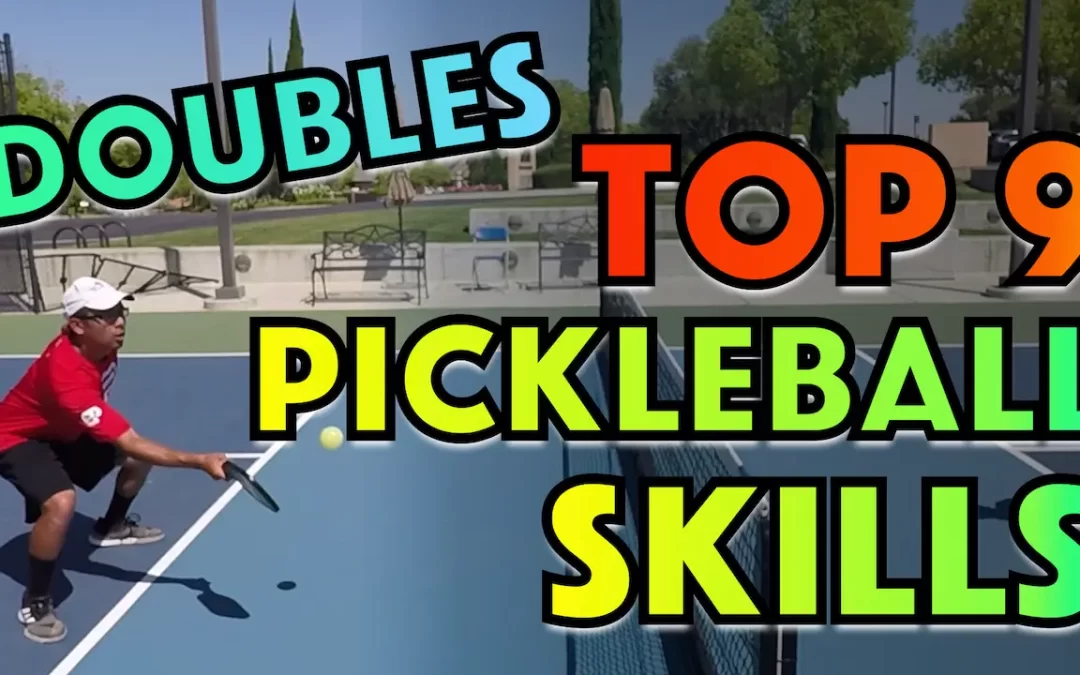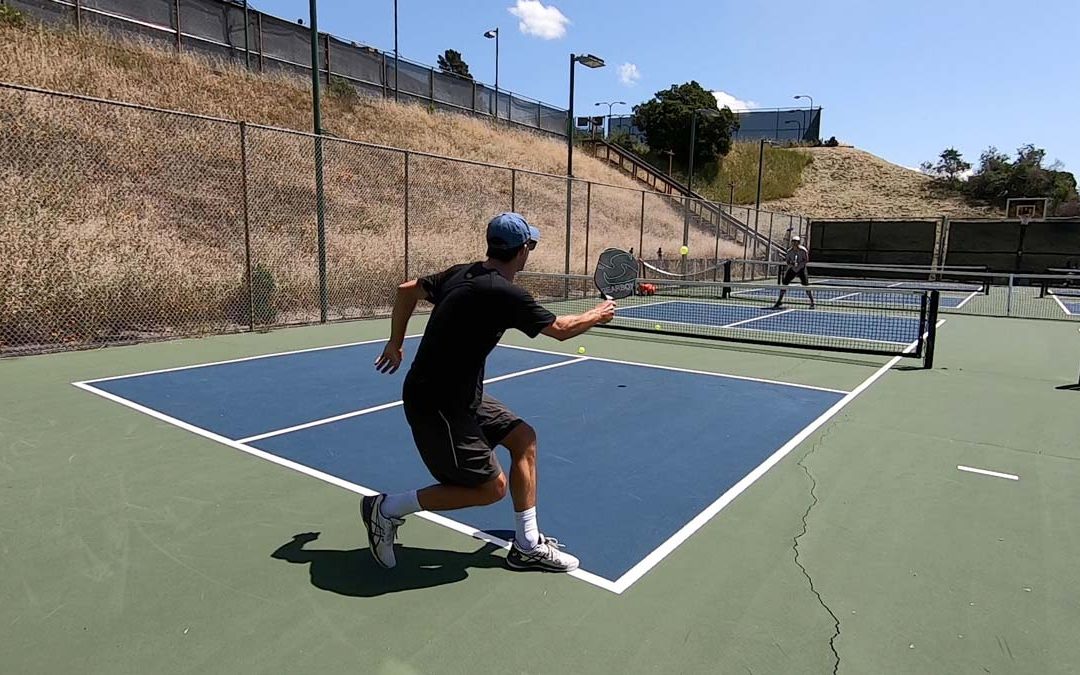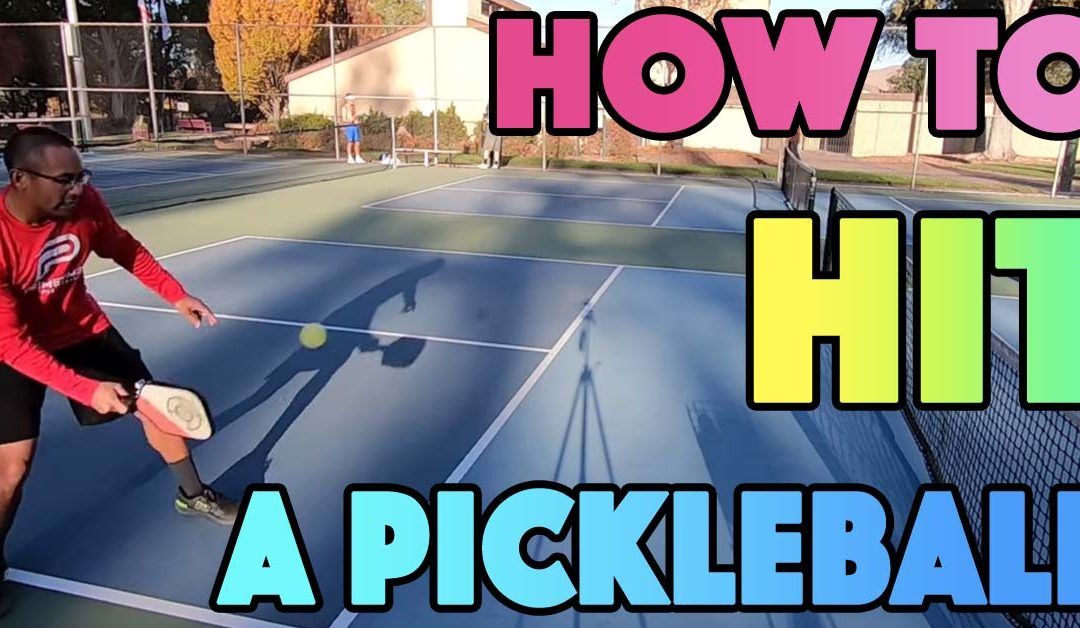It seems that most players want to play with other players who are deemed to be at an equal level or at a higher level of play than they are. It’s fun.
We’ll be super engaged because we’ll feel challenged. If we win, we get bragging rights and if we lose it might suck a little bit on a certain level but we’ll at least get a lot of feedback about where our game is and what we need to work on.
Let’s think about it and break down how we are approaching the game when our opponents are at the same level or are better than us.
Generally, we try to maximize the amount of time we impose our strengths onto our opponents. We preferably apply the strongest parts of our game to the weakest parts of their game. That’s a great game plan and I totally support that. It’s your best shot at the win.
At the same time, we try to minimize our opponents opportunities to exploit our weaknesses. If we don’t like our backhand, we run around it as much as possible and we stand over somewhat to try to minimize that area and their chances of hitting there.
Or let’s say we’re not consistent at hitting topspin we definitely don’t use it because we’ll go down.
If we aren’t good at dinking, we avoid it and we hit hard mostly and so on and so forth, depending on what the weaker parts of our game are. Generally, you’re trying to hide them as much as possible in highly competitive games.
All that makes a lot of sense. There’s nothing wrong with that.
We want to be playing those types of games. There is some truth to the fact that the more you play the better you will get and all players on the court in that type of game will get incrementally better if they’re focusing on things to improve as they play.
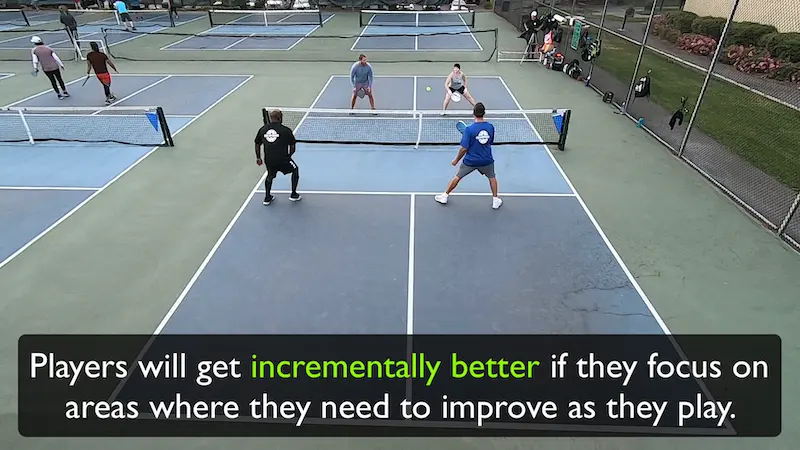
But is there something else we can do or add that we’re not doing that will help us get to the next level that’s maybe even more effective and efficient to help us get there faster?
I’d argue that there is something that most people can do that does fit the bill but almost nobody thinks to do it.
Spoiler alert, I’m not about to say that it’s drilling so stay tuned.
Although drilling is highly effective and you should be doing that too, there are other things you can do as well.
So what’s the next step? What’s that thing that will help you get to the next level other than drilling and other than playing in highly competitive games yet still be super helpful to your progress when done right and may even be one of the best ways to help you get this done?
Let’s break it all down in steps.
I think that there’s a big argument to be made for the case that you get the biggest bang for your buck if you plug the holes in your game which is to shore up your weaknesses.
Yes, there is certainly a place for sharpening your strengths and making them into true weapons but the truth of the matter is you will always be held back by your weaknesses so you must ramp those up otherwise they will always be your Achilles heel and ultimately your downfall.
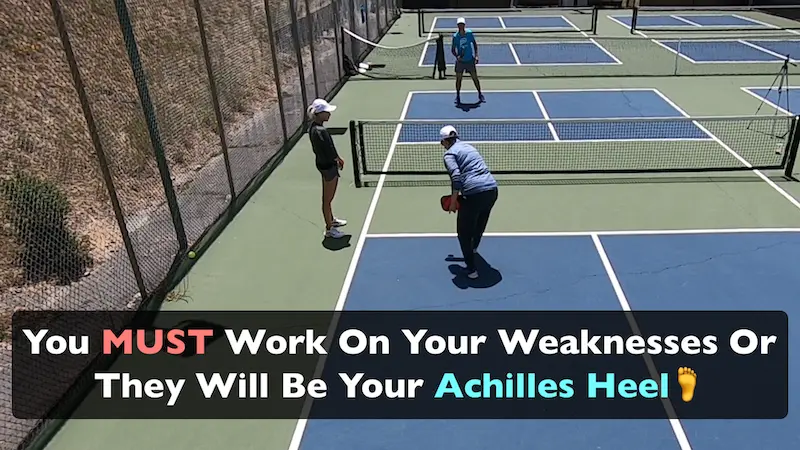
Those are simply the facts.
If your game is like a leaky bucket, then your strengths aren’t going to be able to overcome that in the end.
We want to work on our weaknesses while we play. Let’s say that’s our goal here. And, in order for our weaknesses to get better we have to actually hit them and use them right? That’s the only way that that gets done, I think we can agree on that.
So, are we going to go right back into that same game with the same partner and opponents and run around our strengths to play our weaknesses against as skilled or more skilled opponents than us? No, that would be kind of silly. It probably took everything we had just to beat them. Or, maybe they won even with our most valiant effort.
You can’t go out there and try to win with your weaknesses, you’ll get clobbered, and it’ll be kind of a waste of time for everyone.
Is there an effective way to work on your weaknesses while still playing points?
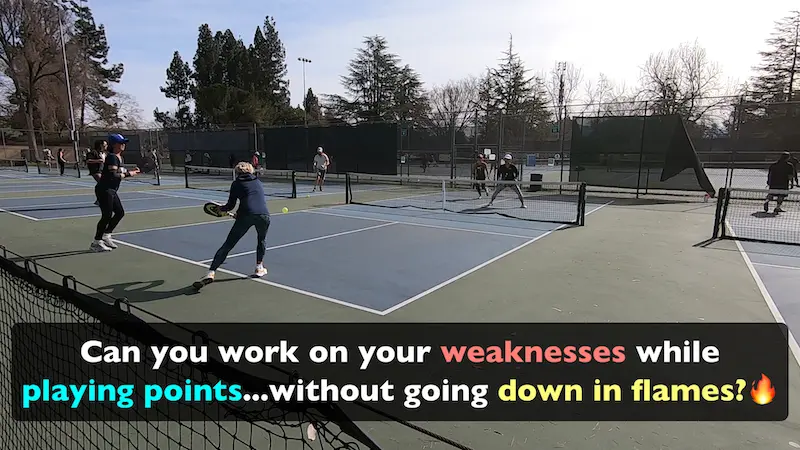
Sure, there is.
What you can do that will be very useful for you and for all on the court, and still play while working on your weaknesses, is to play at such a level where your opponent’s strengths are about as good as your weaknesses.
Or, if it’s important to you to win, and I’d argue that it’s not that important, but to each their own, play at a level where your weaknesses are better than their strengths.
I know this works and helps you improve because I’ve done it many times.
Go out there and find some different games to jump in on, that way you can work your weaknesses as you play, and it can still be a great experience for all.
Your opponents will play their game, nothing really changes for them from other games that they’ve been playing, they’ll still try to bring their best game to the court as they always have and you’ll use only your weaknesses while you play in those particular games.
If it’s your backhand that needs Improvement, run around all your forehands to hit backhands. Make your goal to hit as few forehands as possible.
I’m going to go out on a limb and say that needing to improve your backhand is going to be a very relevant topic for a lot of players out there.
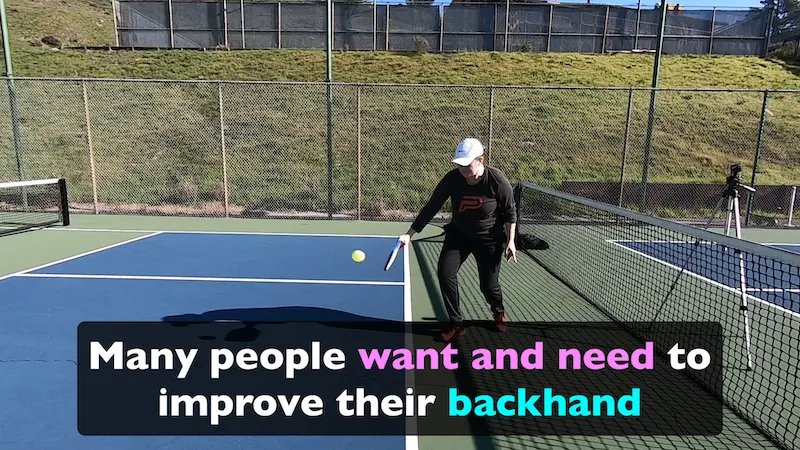
One of the major flaws I see in most players that are not 4.0+ yet, is over reliance on a dominant wing and usually that wing is their forehand side.
If your stronger wing happens to be your backhand then head into those types of games with the goal to work on your forehand or whatever it is that you need to work on.
One of the first stepping stones to getting to high intermediate and advanced levels of play is to have two good wings. A strong and reliable forehand and backhand.
It doesn’t mean that they must be equal it just means that one can’t be a liability. You must be able to hit all shots well with both.
Playing in games that aren’t as competitive for you and predominantly using your weaker wing is a great option for you to bridge the gap that exists for you in that skill and raise it up to a new level.
If you have both wings squared away then great, the next skill you can work on, and use this method to help you tackle it, is the greater development of your soft game shots – dinks, drops, blocks, and resets.
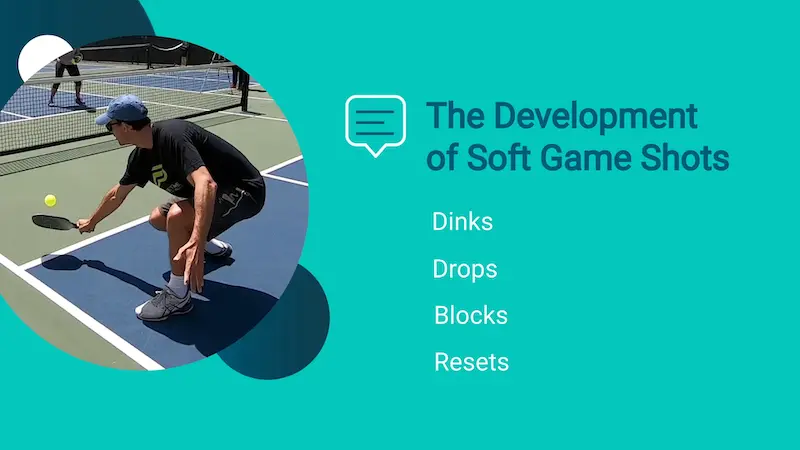
After you’ve cleared the hurdle of having two strong wings, the next challenge I typically see that’s stopping people from getting to that 4.0 and beyond level is a strong soft game.
So, go out there and hit soft on practically everything. Don’t go for winners. Have your focus be on getting every ball back with a soft shot that creates a low contact point for them.
Aim to win by forcing them into errors or let them hit unforced errors. All you care about is hitting with great control, placement, and softness. This will go miles and miles for your game in the long run.
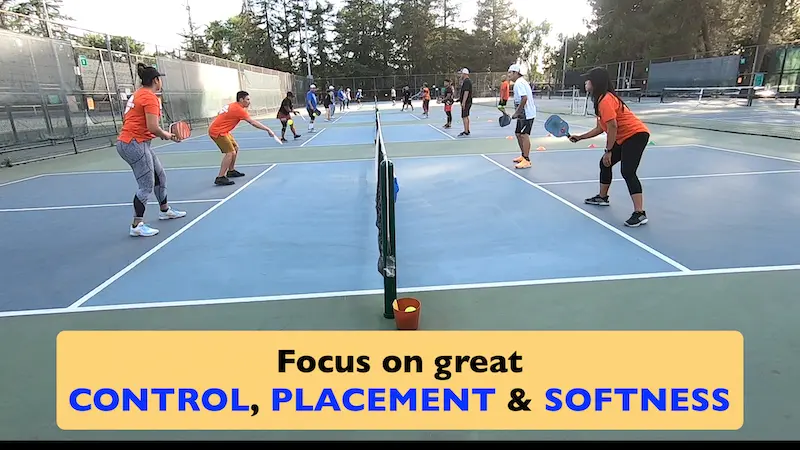
I use this method constantly of playing in less competitive games for me when I was an up-and-coming tennis player. I know many of my friends that were also strong and successful players did the same thing.
I see too many players trying to run away from these less competitive games and I think it’s a missed opportunity. It really can be a win-win for all when you have the right mindset around it and your goals are clear.
You can do this with skinny singles or full doubles games. If you’re doing it in a full doubles game, be sure to let your partner know that you’re going to be working on some skills and will be playing a little differently than they might be used to seeing from you.
The more you do this the less and less of a liability these skills will be in your highly competitive games until they’re not a liability anymore.
It works! I know because like I said I’ve done it myself and will continue to do it for that reason.
The more varied and effective methods you have in your toolbox to help you tackle your progress in the game of pickleball the better you will get faster than others.
I’d add this one into the rotation if I were you!


